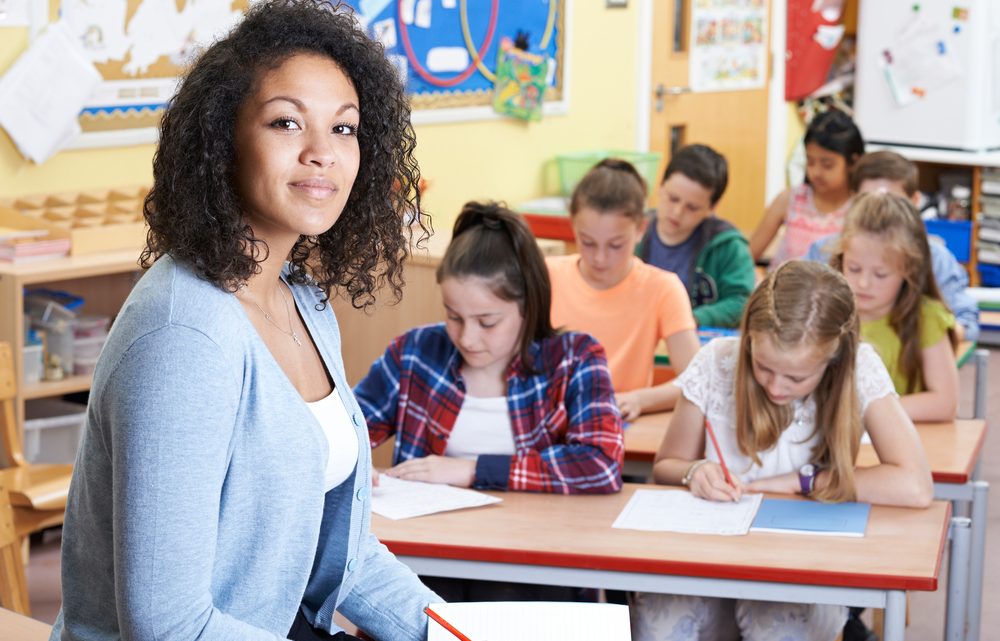By State Sen. Erin Houchin (R-Salem)
I’ve been writing and publishing a series of articles about the opportunities to be found amid the COVID-19 crisis. Previous pieces pointed out steps the Indiana Legislature, Hoosier businesses, and our courts could take to emerge stronger than before. Here, I want to look for similar opportunities in K-12 education.
When the coronavirus pandemic hit, schools were among the first to shut down. Local school districts and individual teachers made valiant efforts to convert to e-learning on the fly. Parents, grandparents, guardians and custodians around the state undertook equally valiant efforts to step into the shoes of their children’s teachers. Too often, this took the form of frustrated parents and crying children muddling through assignments posted online. I speak from experience on this. The last-minute pivot to e-learning at the end of the school year did not go well. I am not casting blame here. Everyone did the best they could. It was not good enough, though, to be the long-term plan. Whatever the school year looks like this fall and beyond, it cannot be an extended version of April, 2020. Schools must adapt. Fortunately, the tools for adapting are available.
K-12 should adopt an online system. There are many ways this could be done. Perhaps a school district chooses to adopt a full-time e-learning model. Another may stagger the days or times students are e-learning with time in the building. By allowing locals the freedom to choose what works for them, we will learn best practices over time. This will also give parents a choice of models that best suit their child. There are many struggling, small school districts across the state. Such districts would be prime candidates for pilot programs to convert to a virtual or hybrid model. Our school systems will undoubtedly be losing students to home school. Adding a viable virtual component to K-12 operations will hedge against economic losses to traditional school districts, make them more relevant to the modern economy, more adaptable to changing circumstances, and will provide more options to students across the state.
For schools to make this value-add, they will need a viable e-learning platform. Three years ago, my sixteen-year-old daughter, Claire, started a business using Google Classroom to provide online summer school to elementary school children. Every summer she has several students she helps prepare, remotely, for the next school year. The Indiana higher education system mastered online education over a decade ago. That model has not even begun to move into the K-12 space. It is well past time for this to happen. The technology is well-developed and ubiquitous. The State ought to adopt and fund an online platform for schools to perform quality e-learning comparable to the State’s university system.
Further, digital tools can help track student growth, even in circumstances where statewide, standardized testing cannot take place. For the last few years, I have been working on opportunities for Indiana to adopt a system of Value-Added Assessment. Value-Added Assessment allows educators to enter information on student scores from classwork, quizzes and tests as they go along, and the software builds a growth model for each individual student. Growth can then be tracked over time, rather than the one data point per year we get from the iLearn test. Such an approach could eliminate “high-stakes,” standardized testing altogether. It would also allow continued growth monitoring and intervention, even in times of disruption like we are currently experiencing.
There will be objections to this. The education bureaucracy is the hardest barge to turn in state government. What about lack of internet access? Of course, we must fund infrastructure improvements to ensure access to broadband. I have been working doggedly at this since I was first elected to the Legislature because my district is the least wired in the state. What about kids in poverty who don’t have the same access to resources or have parents who are disengaged? We will need a more robust system for checking on kids who are struggling and helping with compliance or removal of barriers to participation. What about teachers that will lose their jobs because we may not need as many in the classroom? Perhaps, but there will always be a demand for high quality teachers. The focus must remain on delivering the highest quality education to Hoosier youth.
The current K-12 model is being disrupted, whether we like it or not. Of all the sectors affected by the pandemic, K-12 education is perhaps the most profoundly impacted. At the same time, the education bureaucracy is historically one of the most resistant to change. The question is do we recognize this as an opportunity to improve the system, or do we try to hammer the square peg of the current model into the round hole of the post-corona world. Luckily, all the necessary ingredients to make K-12 education more resilient, more responsive and ultimately better already exist. The only remaining factor is the courage to take bold action. Given the uncertainty of the future, we need to do so now.
Abdul-Hakim is out this week, so we’re running guest editorials. Feel free to submit one (700 words or less) to abdul@indypolitics.org.














